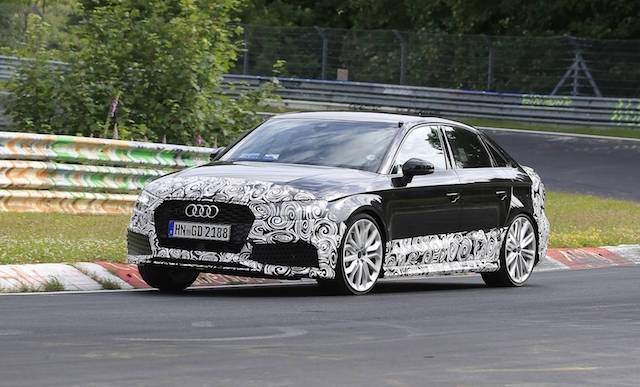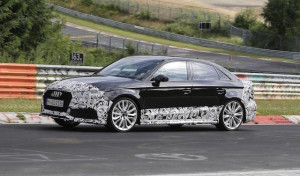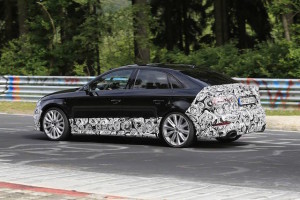
 Audi New Zealand general manager Dean Sheed says he’d be silly not to take the new RS3 sedan. “I haven’t been offered it yet, but it’s a no-brainer,” he said.
Audi New Zealand general manager Dean Sheed says he’d be silly not to take the new RS3 sedan. “I haven’t been offered it yet, but it’s a no-brainer,” he said.
He expects it to land late next year and to add to an impressive statistic: New Zealand has the highest percentage of Audi RS sales in the world.
“It’s 12 per cent – we sell 100 cars and 12 will have an RS badge on them,” he said. “The RS3 sedan should go down well here.” The global penetration of the RS badge is just around 1 per cent.
 Audi has given the A3 sedan the RS treatment and the new flyer and its Quattro all-wheel-drive system has been spied testing at the Nurburgring circuit in Germany.
Audi has given the A3 sedan the RS treatment and the new flyer and its Quattro all-wheel-drive system has been spied testing at the Nurburgring circuit in Germany.
The signs that it offers something special are visible under the camouflage: larger wheels, air intakes, brakes; low chin spoiler, rear lip spoiler; different skirts; two large oval exhaust pipes, like those on the RS3 Sportback. The S3 and S4 have quad exhaust tips.
“It will be bolder and more aggressively looking than the Sportback,” said Sheed. The RS3 Sportback landed in New Zealand last year, priced from $99,990. Its boosted 2.5-litre in-line engine delivers 270kW/465Nm to all four wheels via a seven-speed dual-clutch transmission.
 But the RS3 sedan is likely to be powered by the 2.5-litre engine from the Audi TT RS, a go-faster development of the Sportback’s five-cylinder, 20-valve unit. Expect perhaps 280kW/475Nm to outgun – on paper at least – a four-paw car like the 265kW/440Nm Mercedes-AMG CLA 45, and a rear-driver like the 272kW/465Nm BMW M2.
But the RS3 sedan is likely to be powered by the 2.5-litre engine from the Audi TT RS, a go-faster development of the Sportback’s five-cylinder, 20-valve unit. Expect perhaps 280kW/475Nm to outgun – on paper at least – a four-paw car like the 265kW/440Nm Mercedes-AMG CLA 45, and a rear-driver like the 272kW/465Nm BMW M2.
There’s another reason why Audi wants to add more oomph to the RS3 sedan and that’s its likely debut in the United States. Hot hatchbacks like the Sportback don’t have much of a following in the US. But sporty sedans do. And Audi of America CEO Scott Keogh has made it clear to bosses in Europe that he wants the new RS3 Stateside in 2017.
